Remembering the Pony Express at the Carson City Mint - A Photo Essay
This week Garrison Keilor in one of his birthday remembrances on National Public Radio paid homage to an anniversary of the Pony Express. Joining in the tribute, midway in the photos posted below are photos I took of a plaque that stands in front of the Carson City Mint building that was erected to honor the 100th anniversary in 1961 in
commemoration of the Pony Express. Also added are some further photos I took within the past year which include the original coin press in operation today, a collection of Carson City coins on display, and various views of exhibits and displays there in the building where the Carson City Mint once operated.
Also below is a link to a description of some of the Pony Express stations that existed in Nevada including the one in Carson City. The Pony Express (or as it was known at the time, The Overland Mail Route) also ties into the story behind the survival of the small number of the 1861 San Francisco minted Paquet Reverse $20 Double Eagle gold pieces
since the correspondence from the East to stop production of the coin was delayed getting to San Francisco due to the time it took for messages to still be delivered via the Pony Express in 1861.
Below the Carson City photos I have posted the 1861 Paquet Reverse from my collection with its unique reverse design. Jeff Garrett and Ron Guth in their 2008 Third Edition of "100 Greatest U.S. Coins" place the 1861 San Francisco minted paquet at number 83 and note that "there are probably 200 to 300 examples known in all grades." An AU
example is given an historical value by the authors of $85,000.00. No known uncirculaed examples exist.
Immediately below are commemorative coins being minted on the same coin press that was the first one used in the Carson City mint. Bringing this topic full circle, one of those commemoratives minted this past year was in honor of the Pony Express.
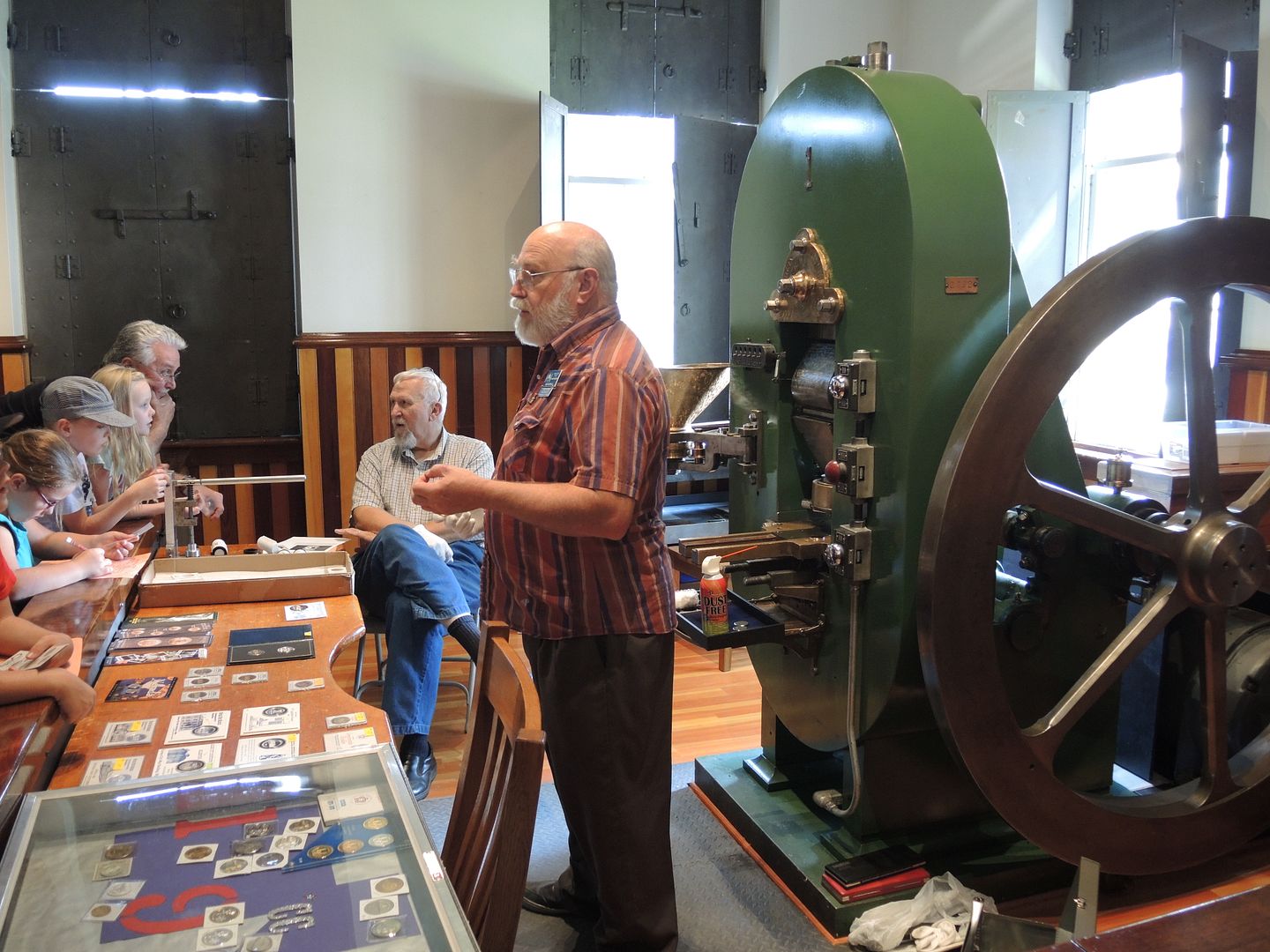
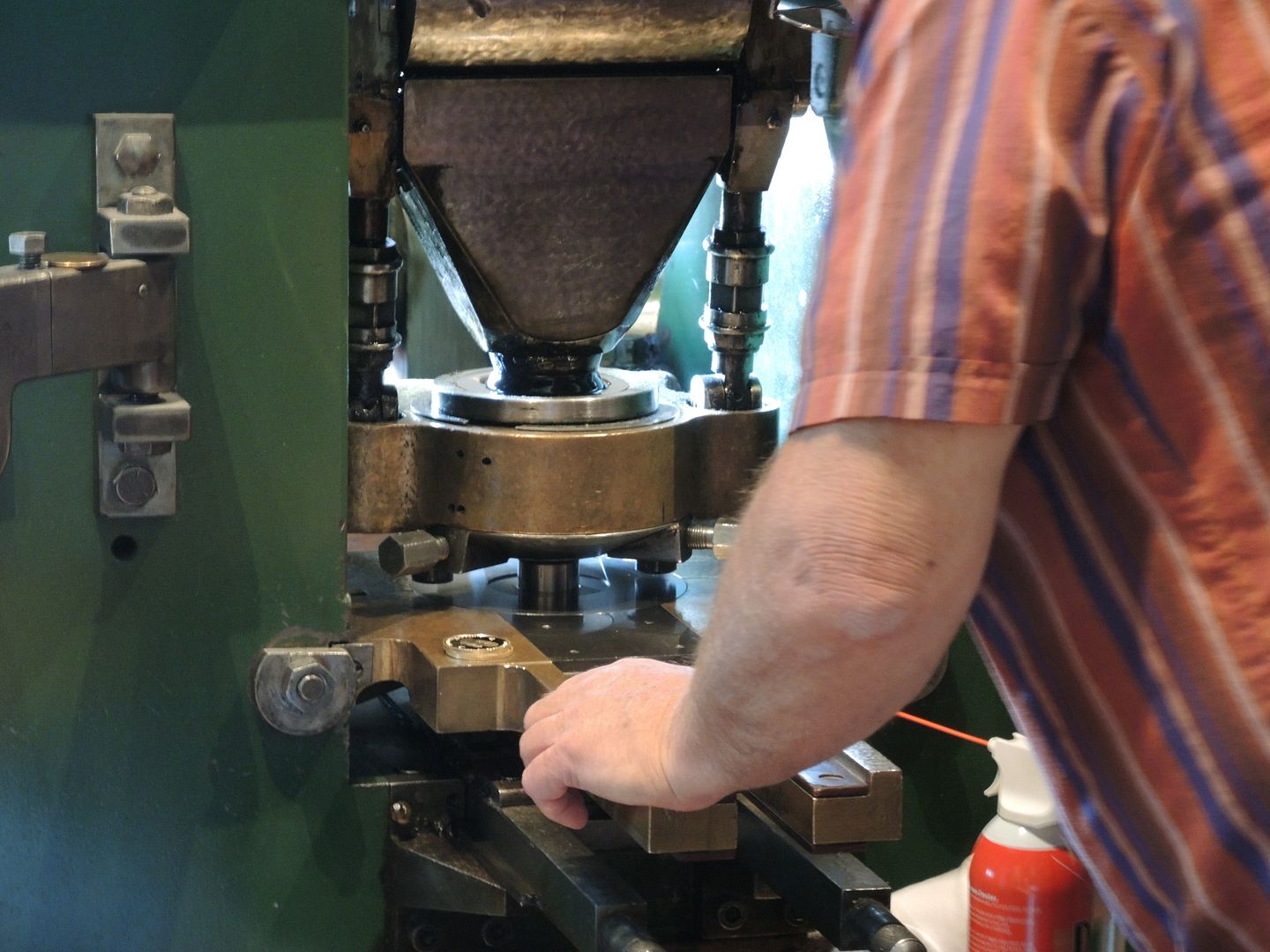
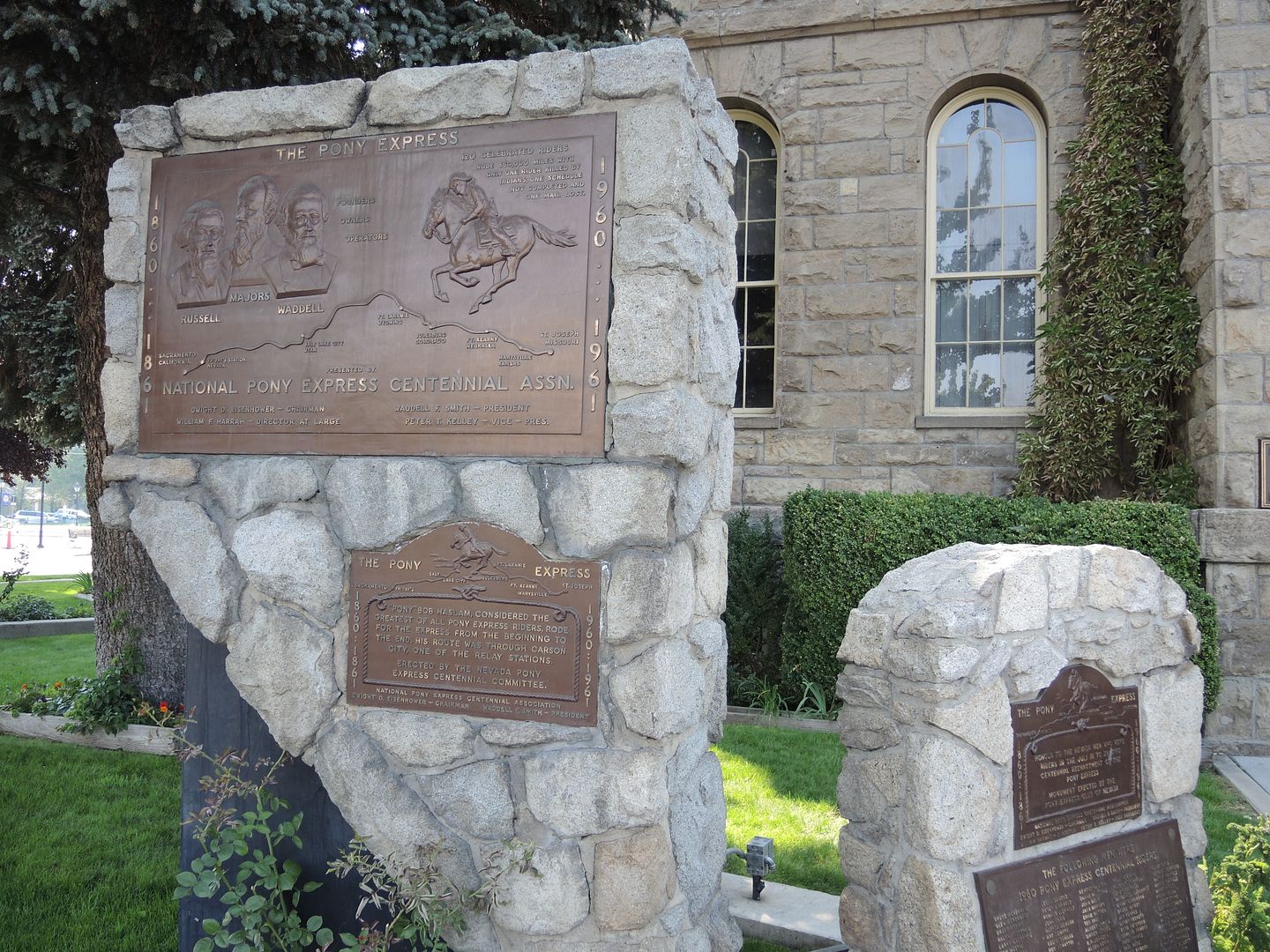
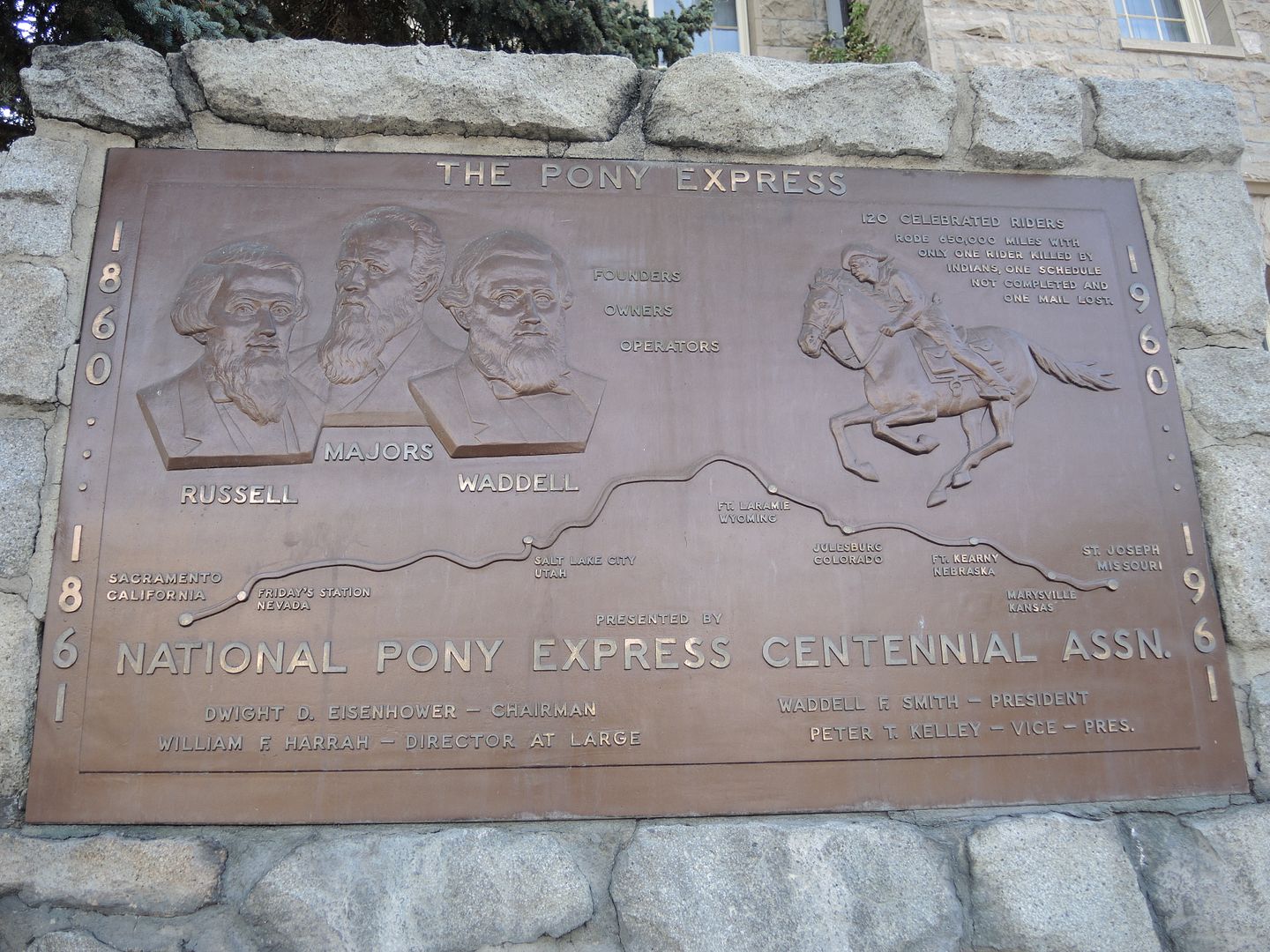
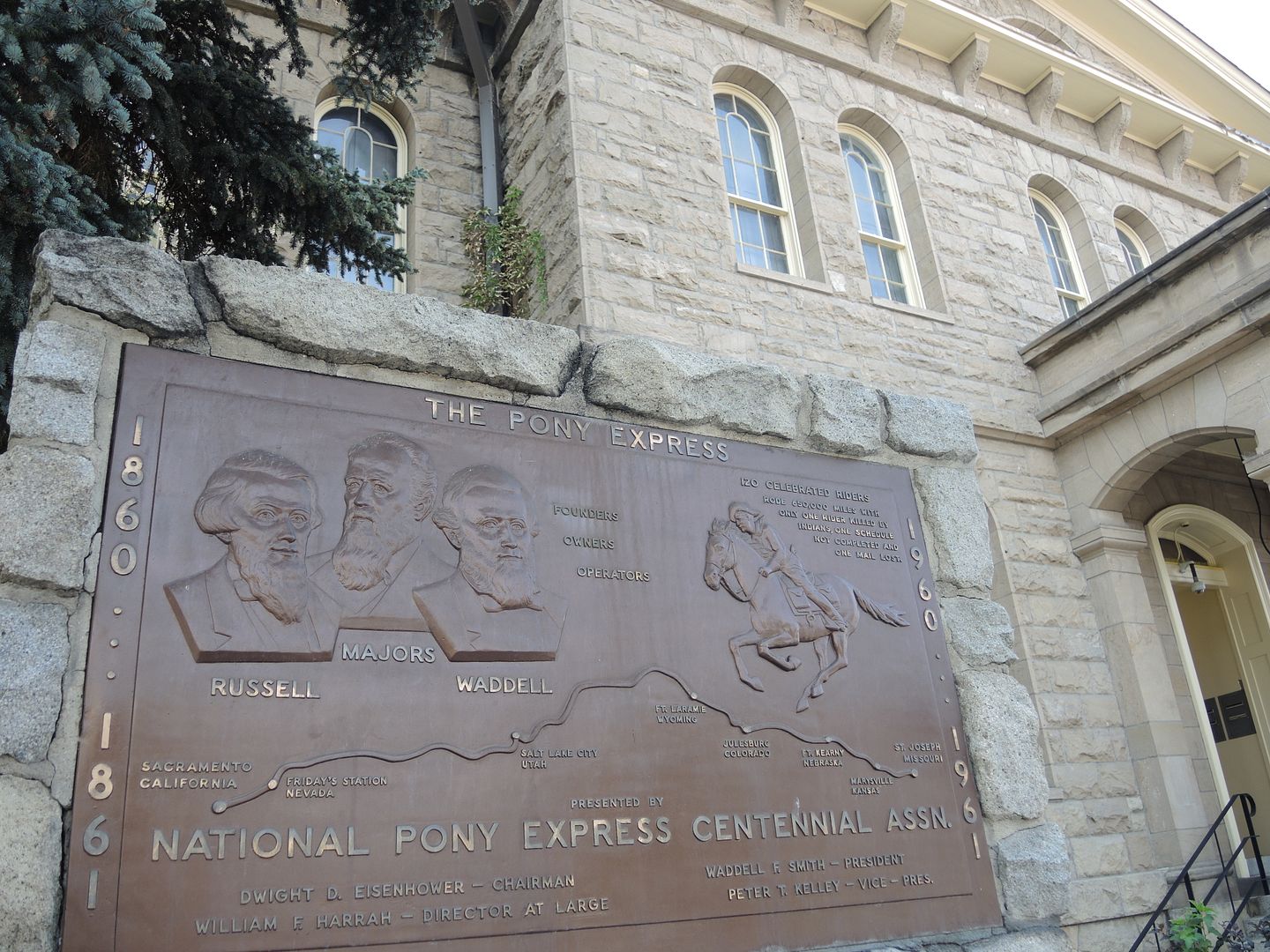
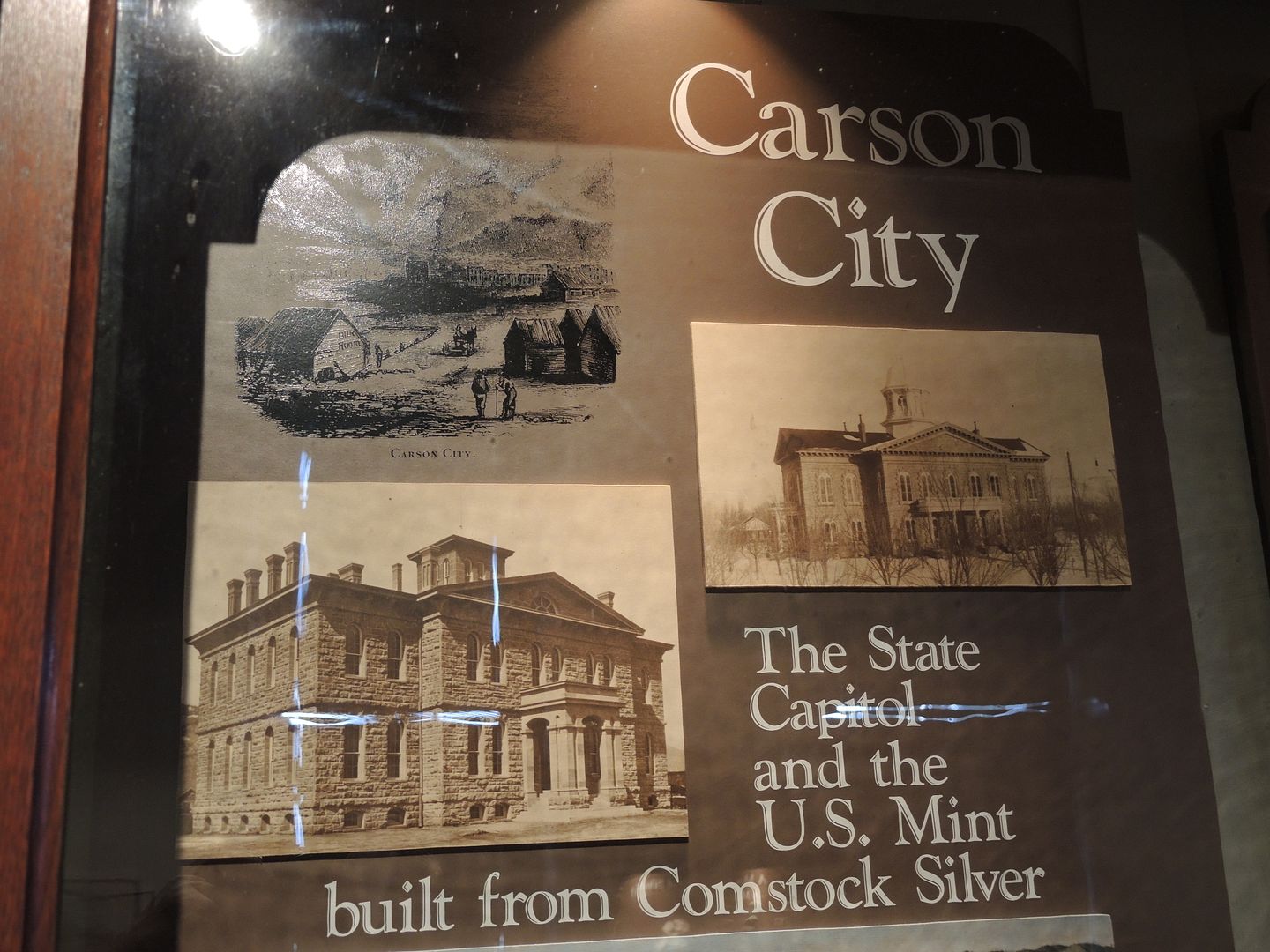
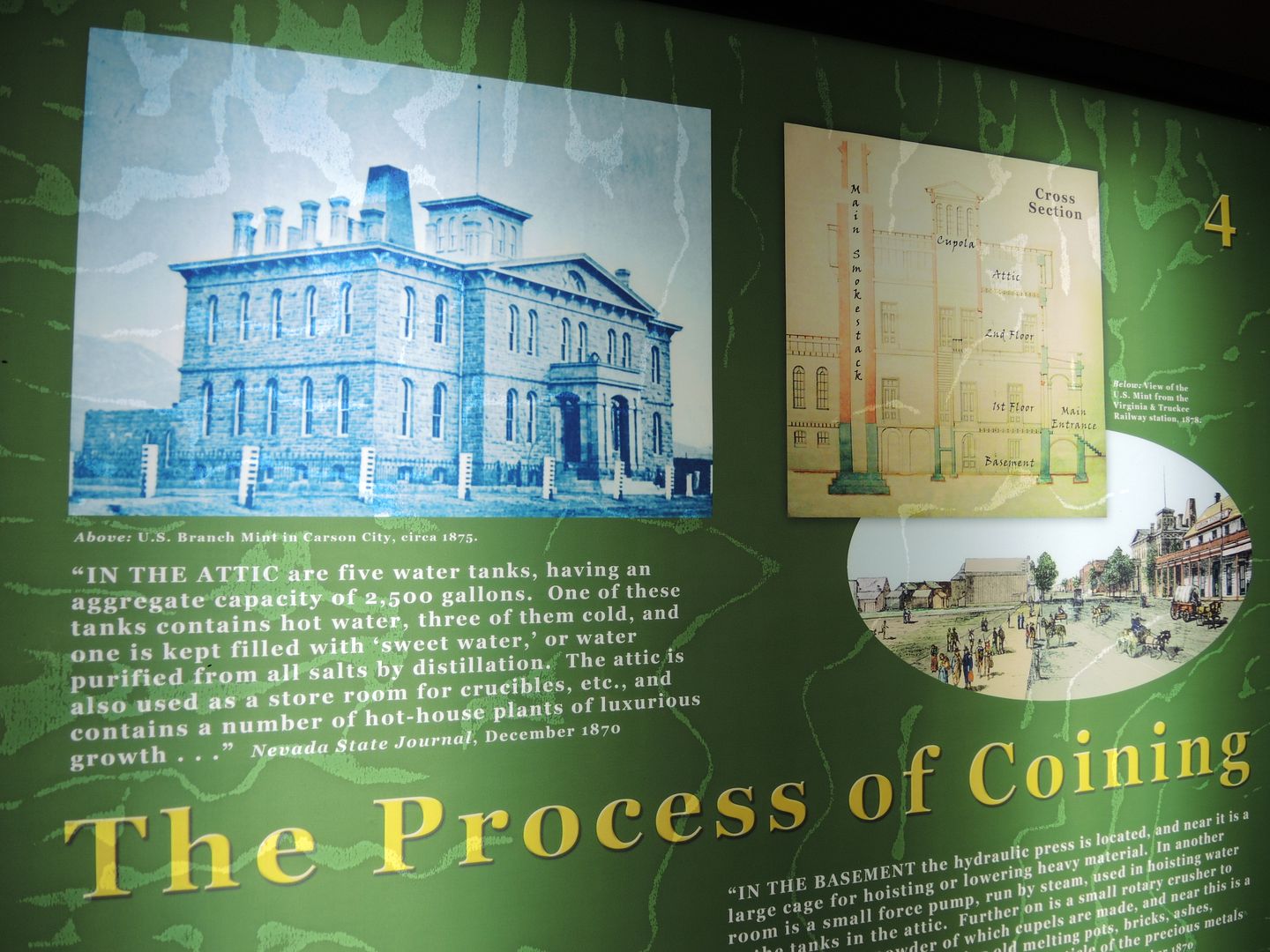
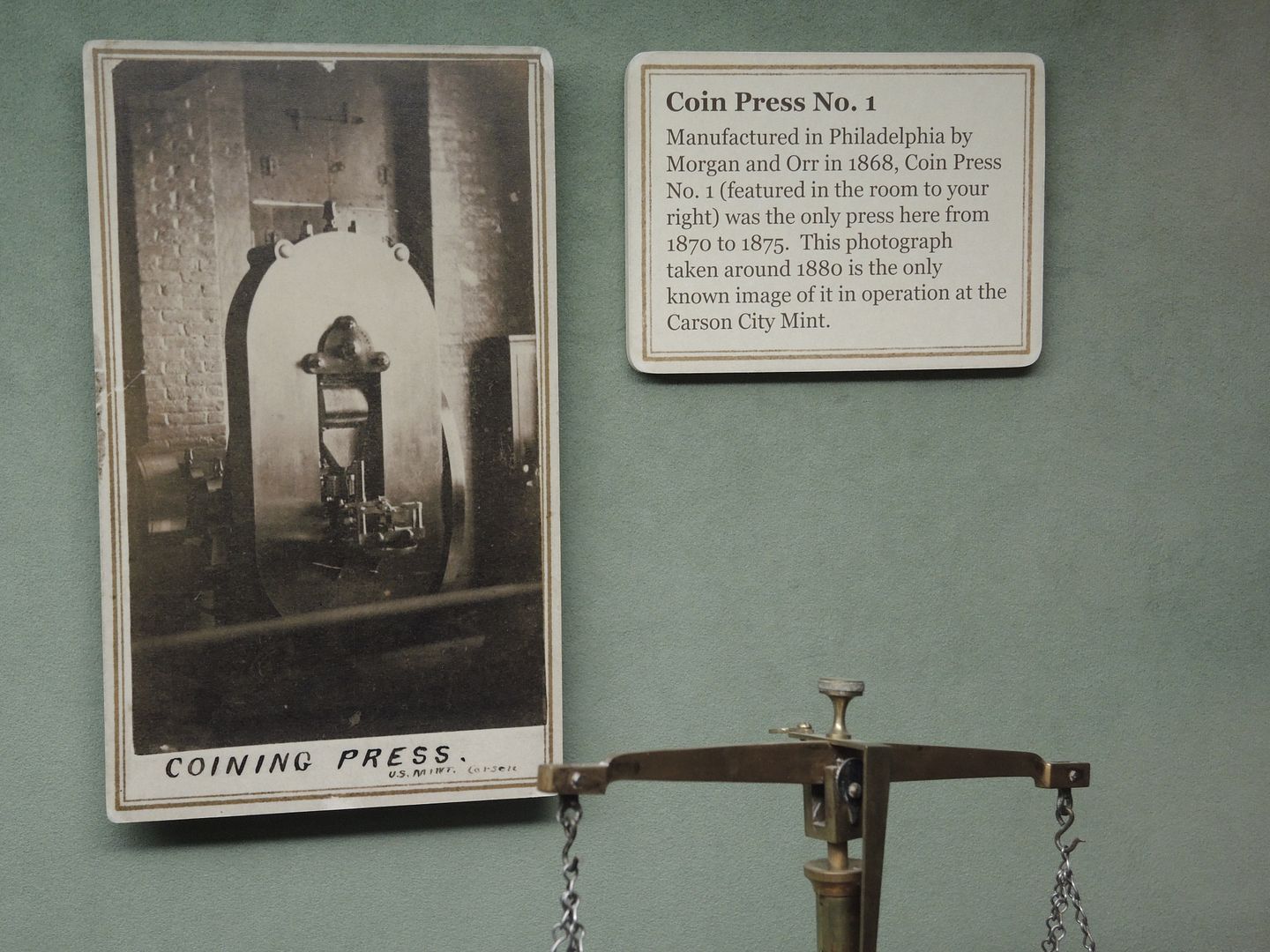
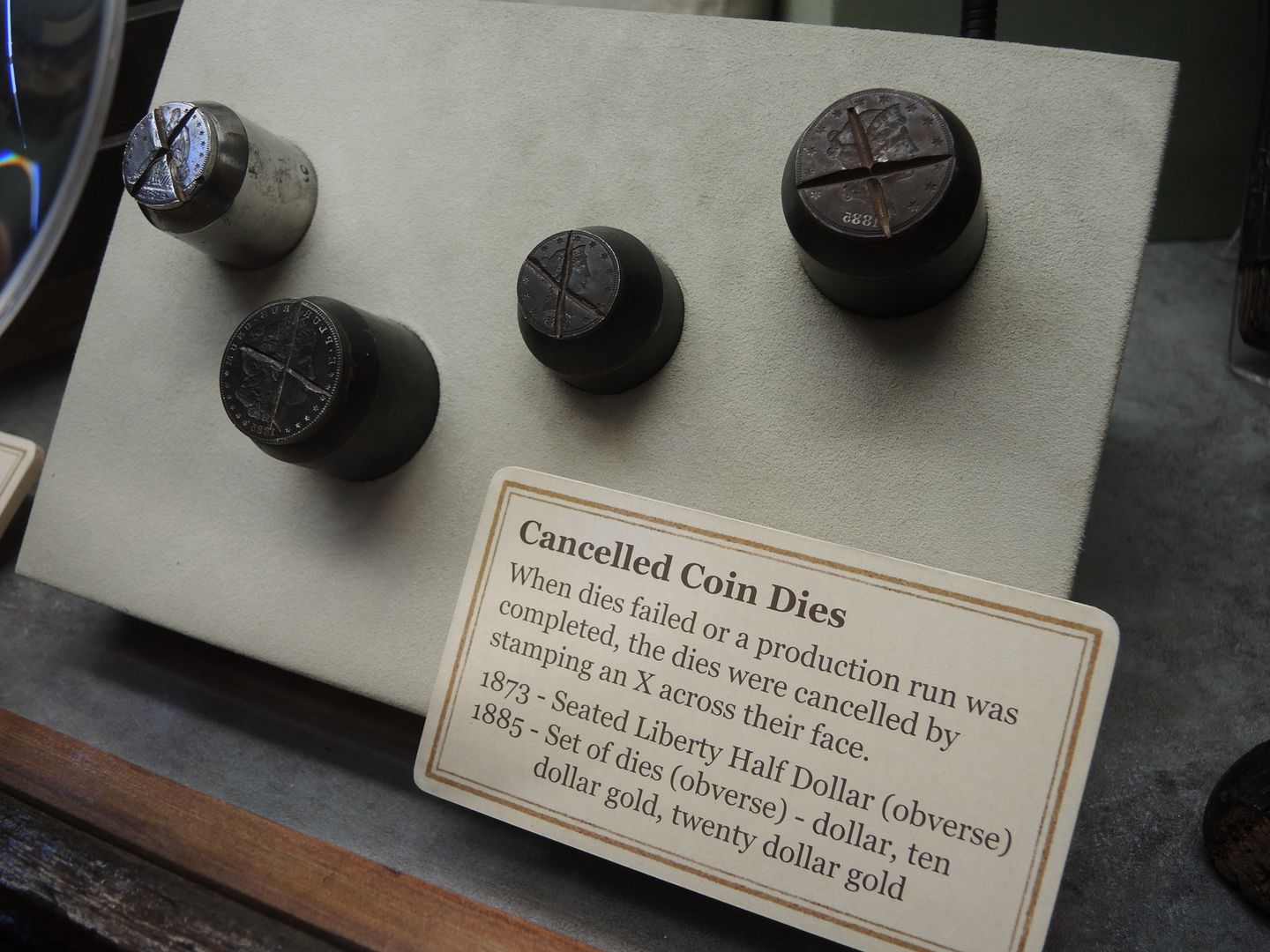
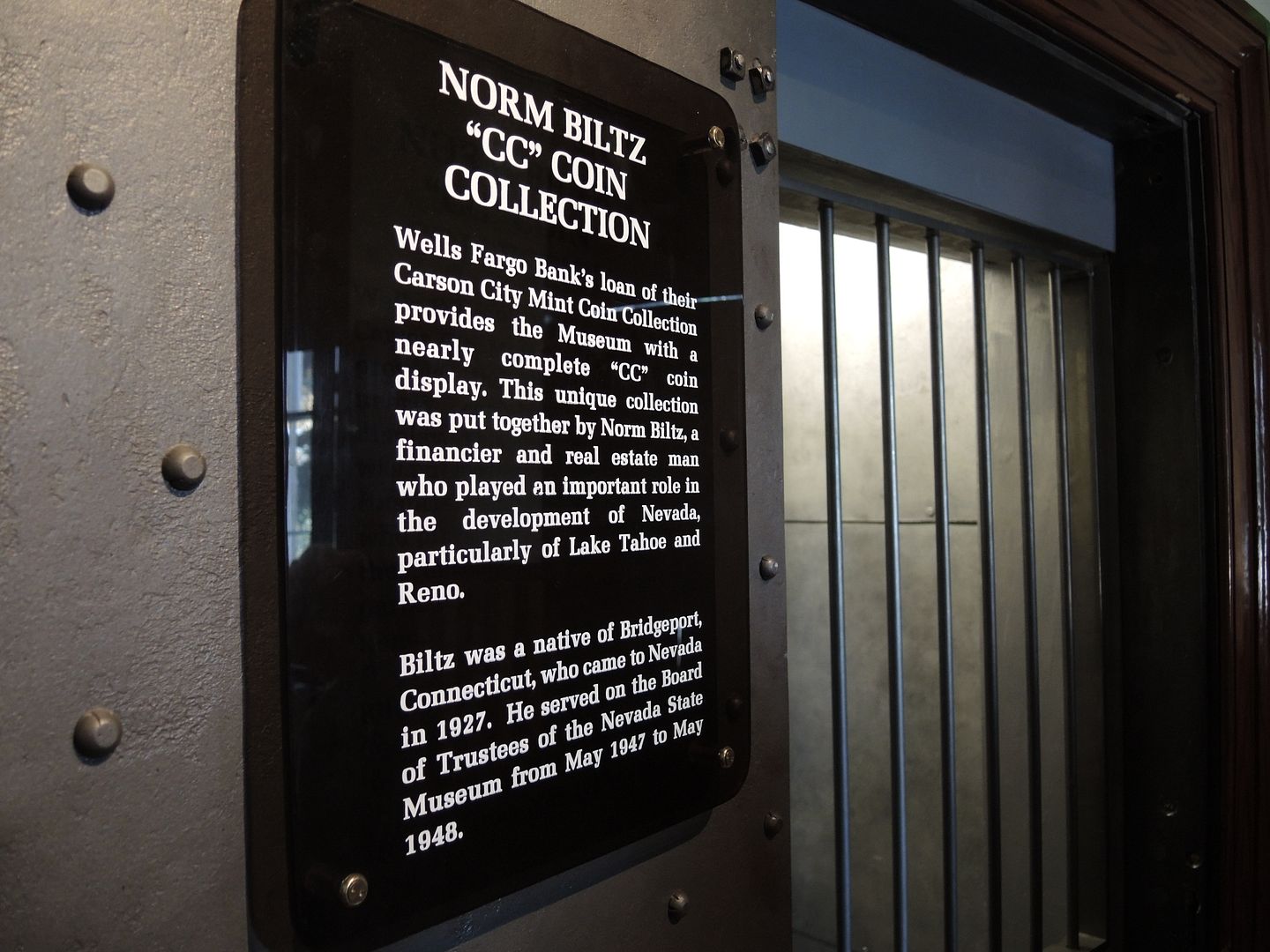
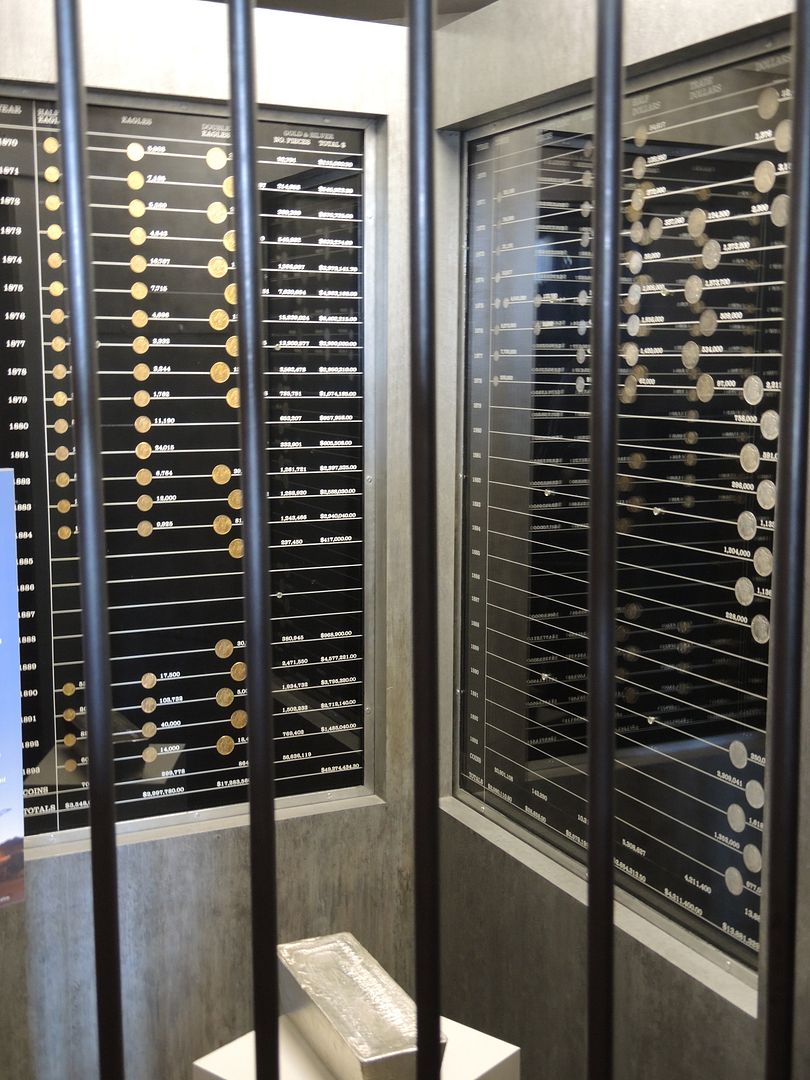
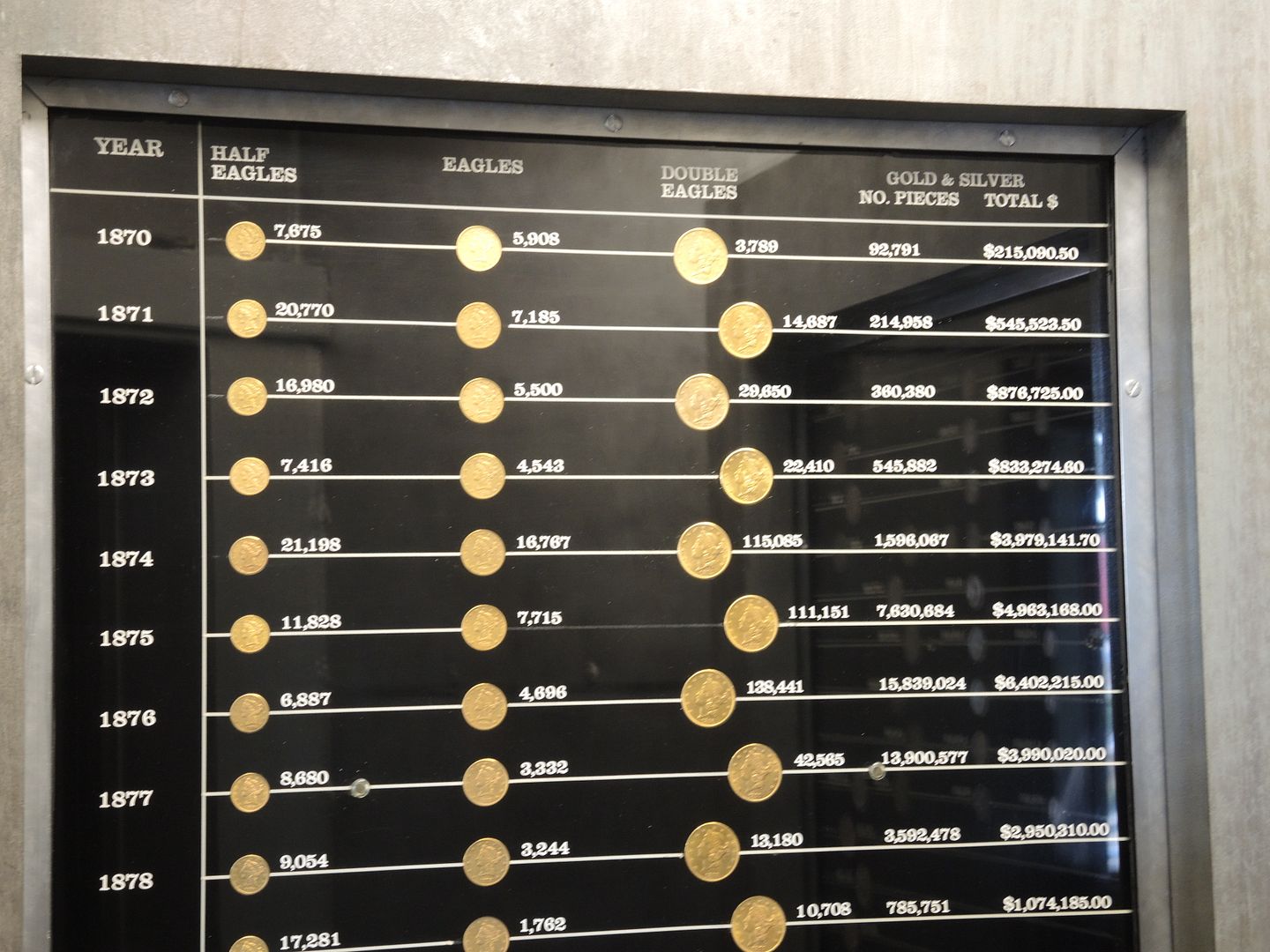
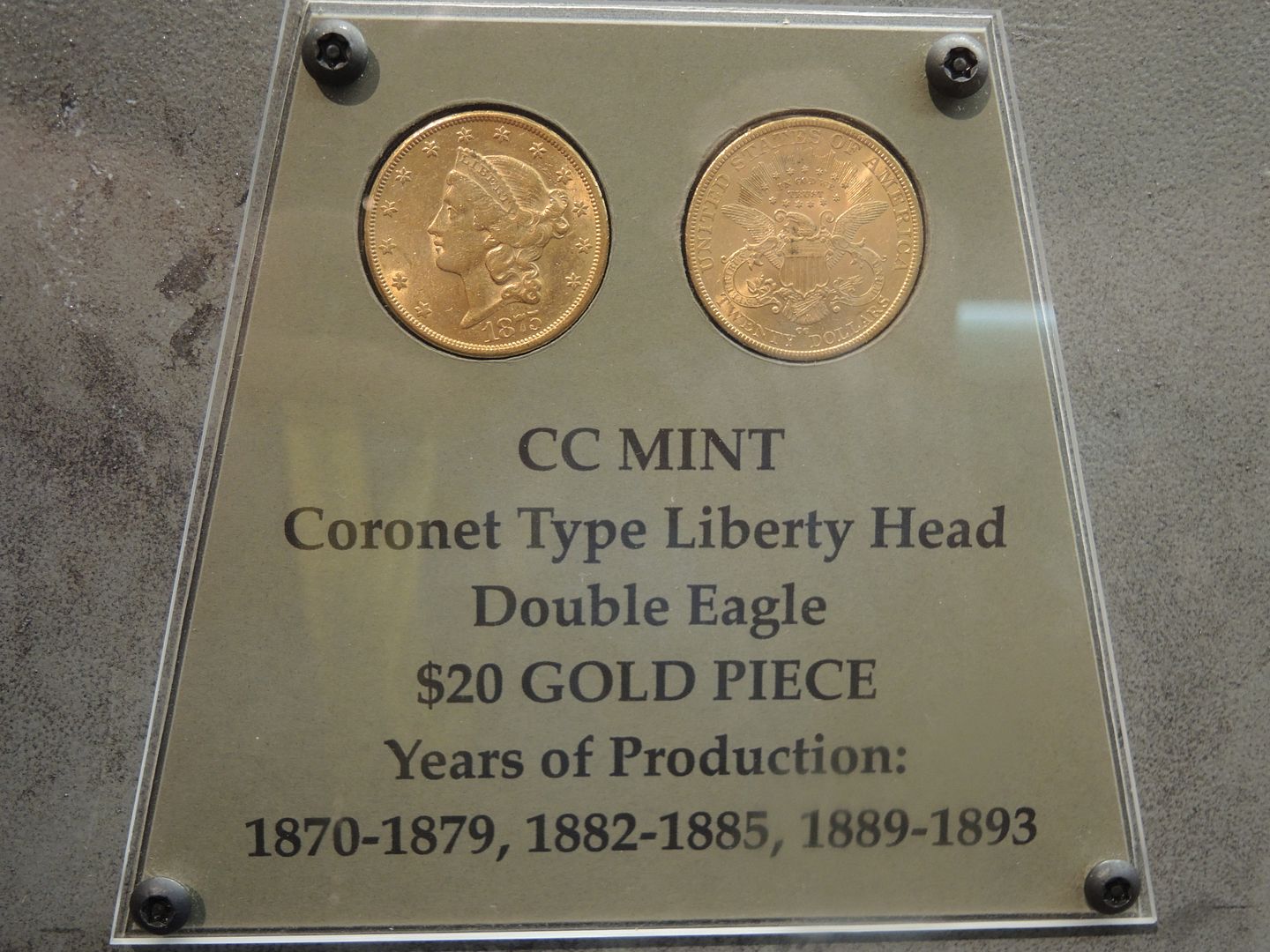
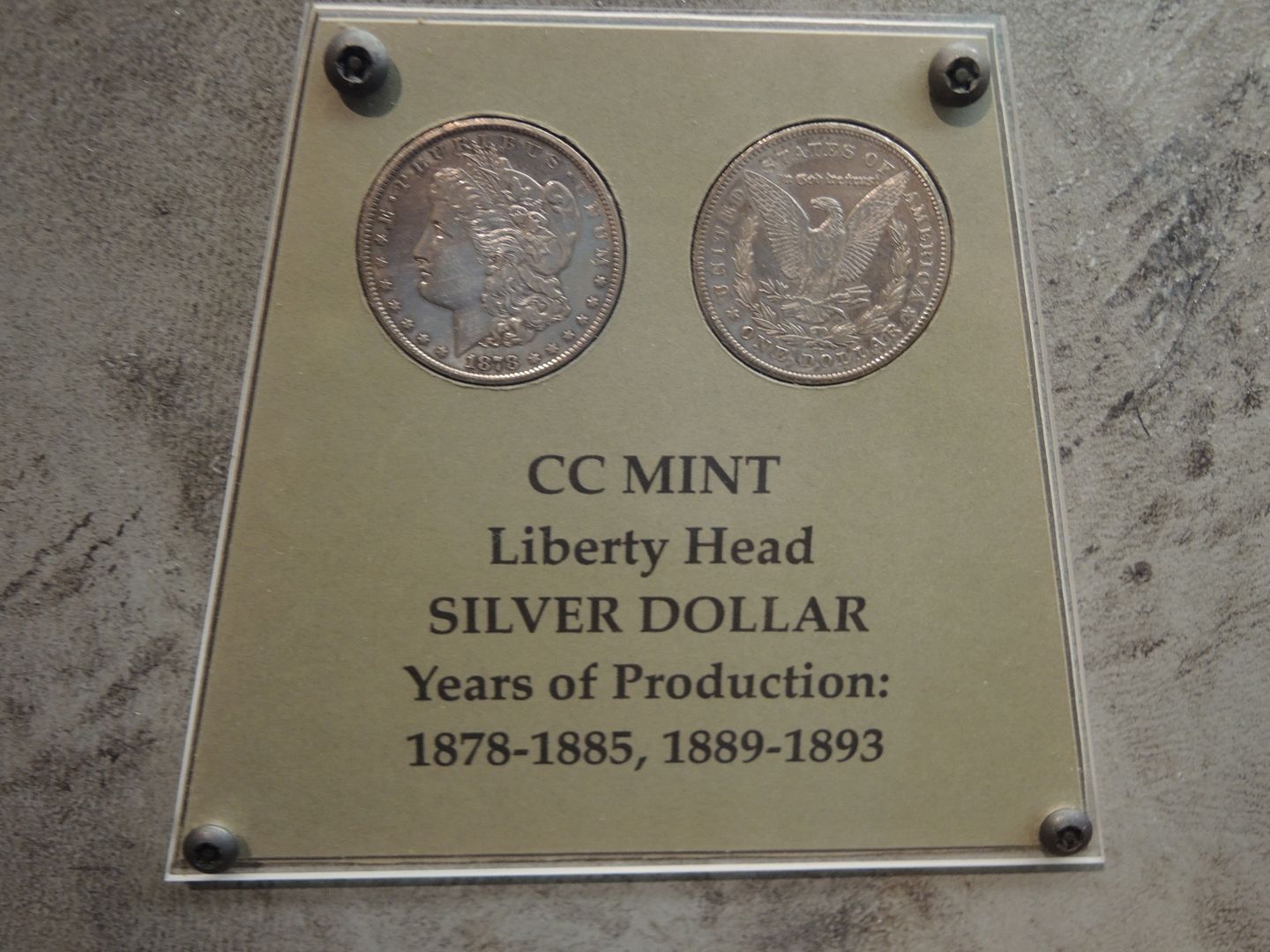
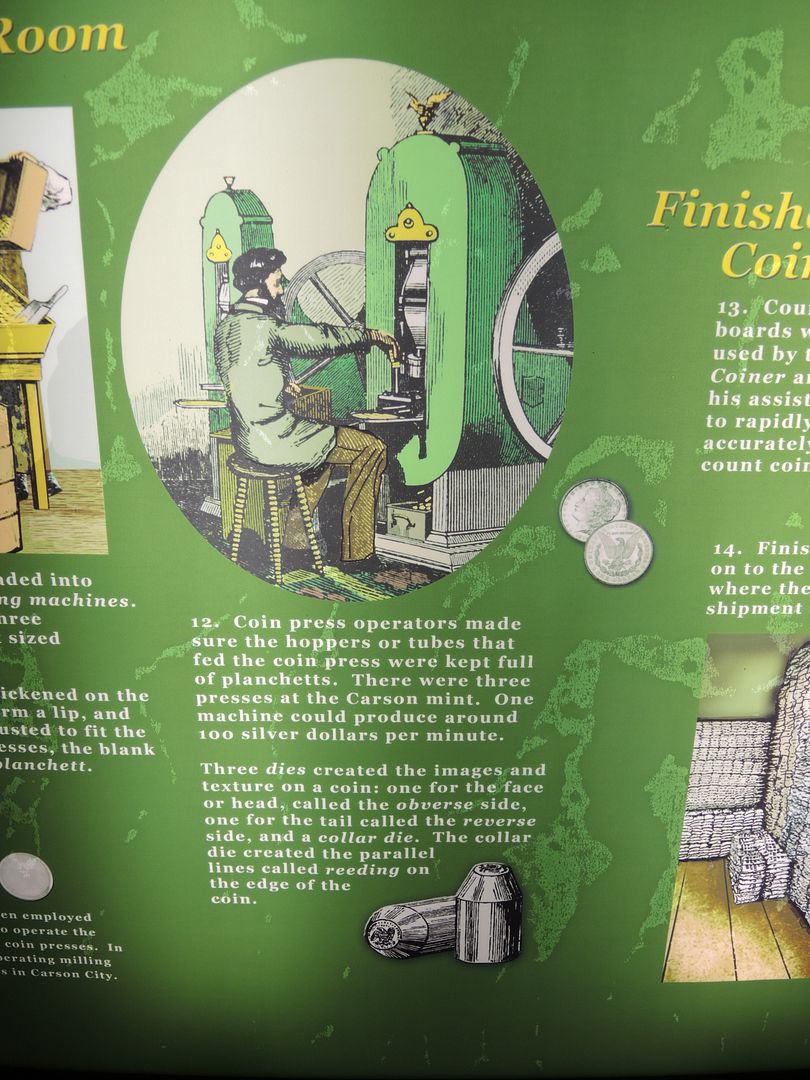
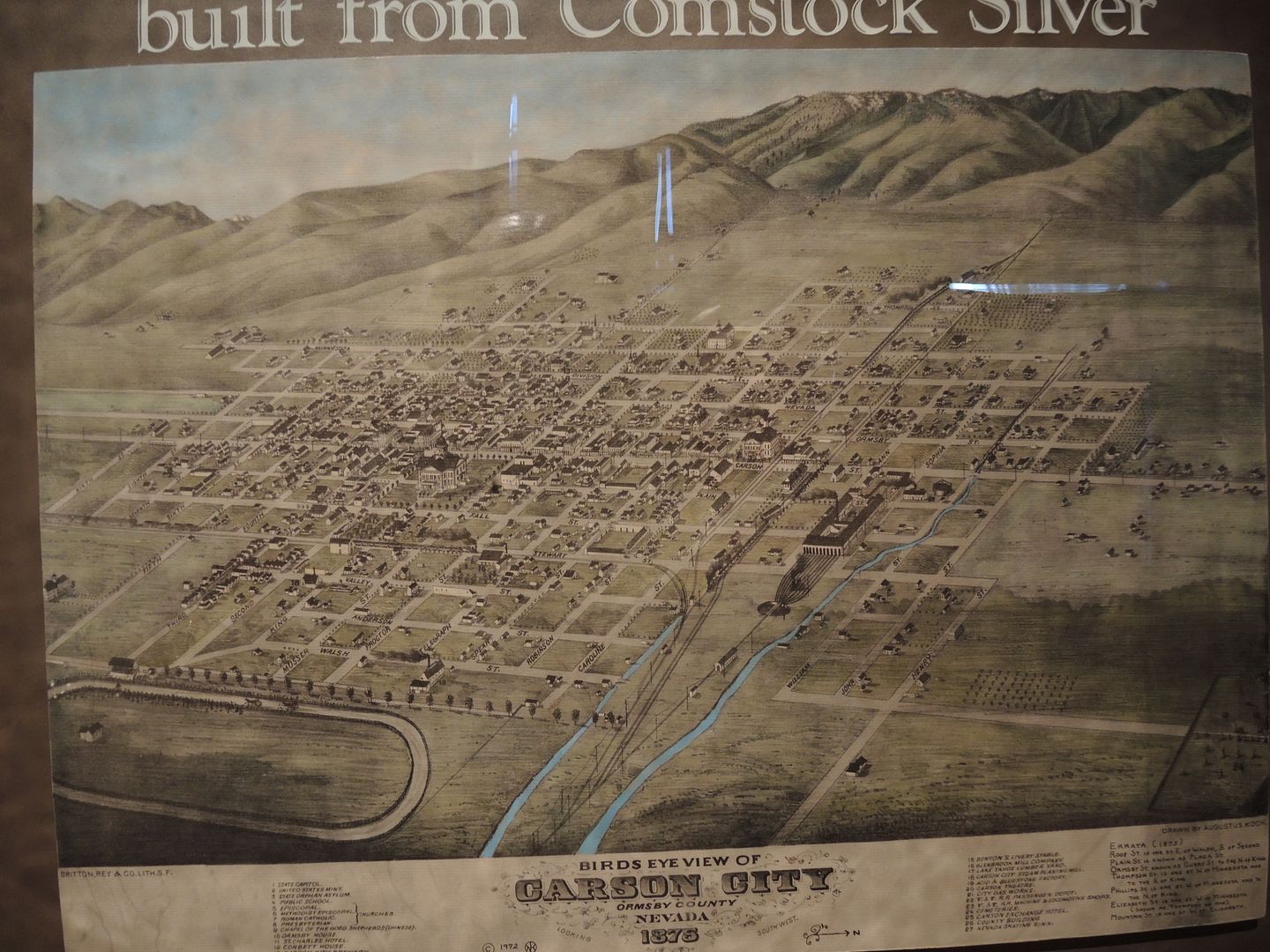
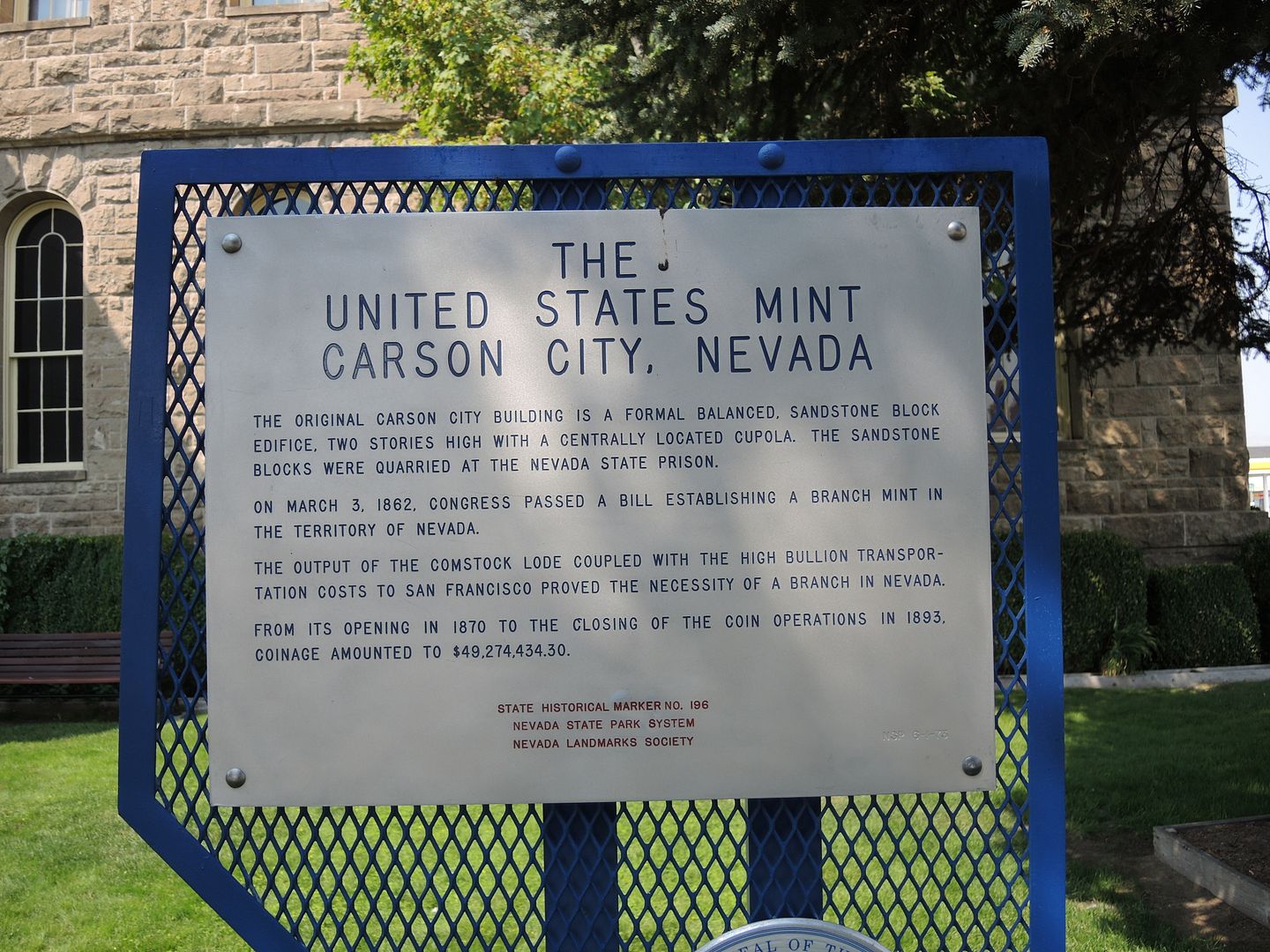
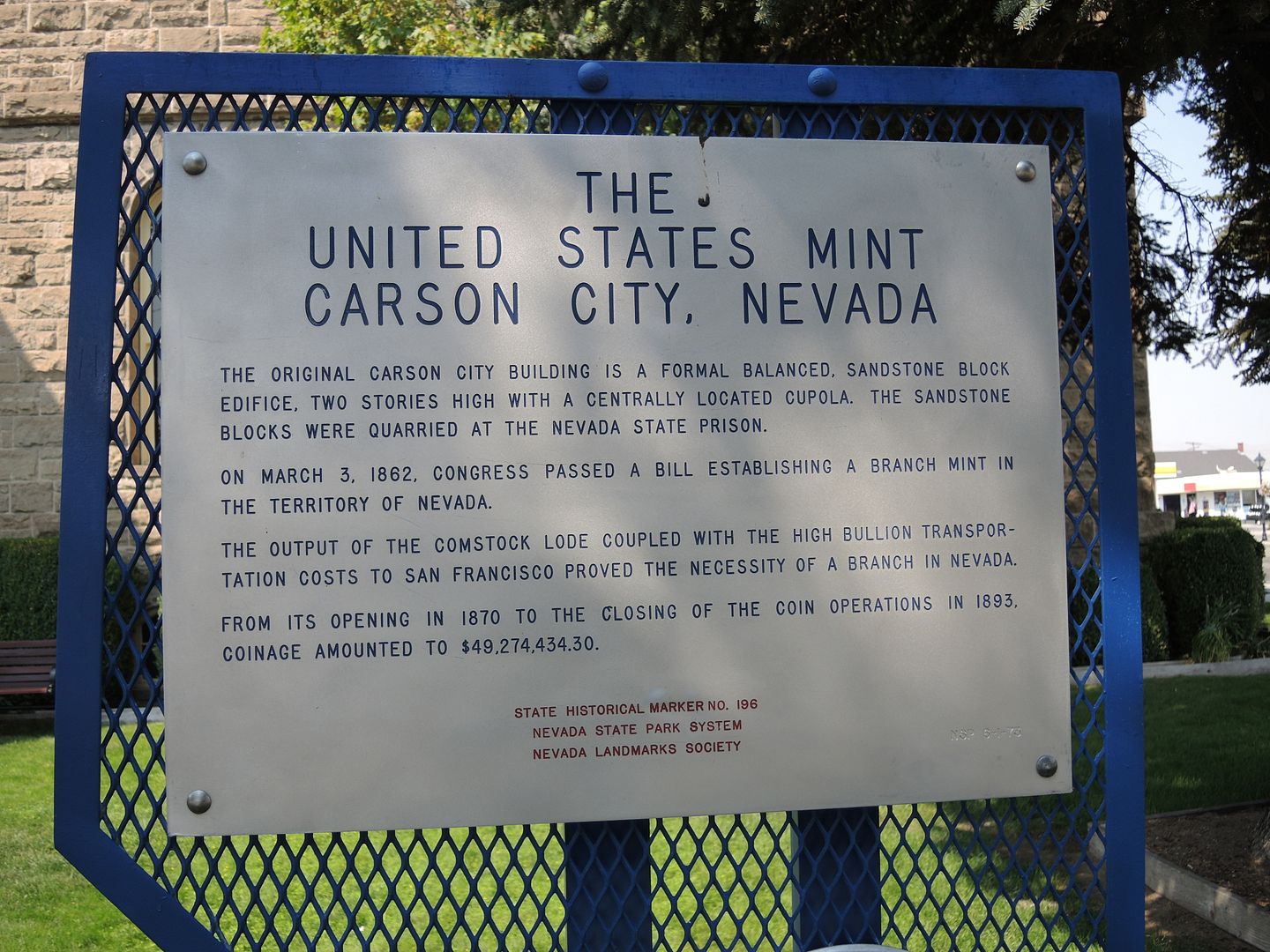
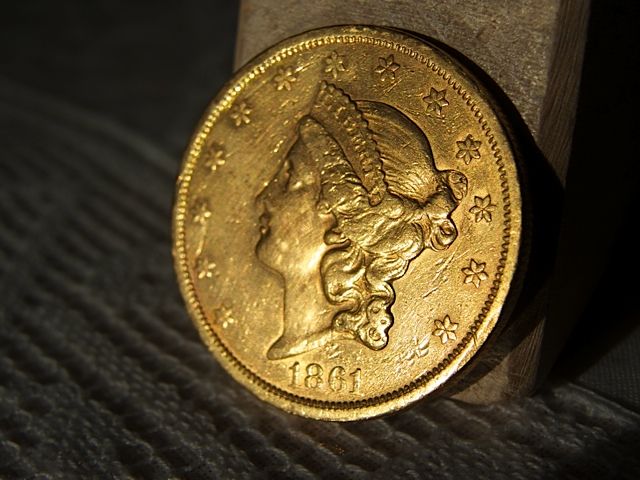
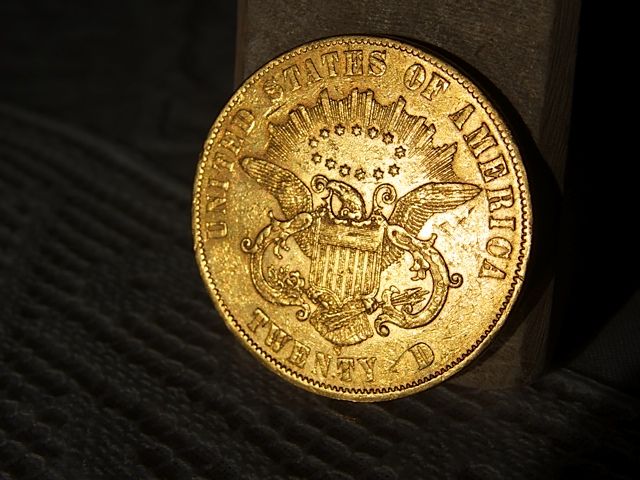
Pony Express in Carson City and beyond
commemoration of the Pony Express. Also added are some further photos I took within the past year which include the original coin press in operation today, a collection of Carson City coins on display, and various views of exhibits and displays there in the building where the Carson City Mint once operated.
Also below is a link to a description of some of the Pony Express stations that existed in Nevada including the one in Carson City. The Pony Express (or as it was known at the time, The Overland Mail Route) also ties into the story behind the survival of the small number of the 1861 San Francisco minted Paquet Reverse $20 Double Eagle gold pieces
since the correspondence from the East to stop production of the coin was delayed getting to San Francisco due to the time it took for messages to still be delivered via the Pony Express in 1861.
Below the Carson City photos I have posted the 1861 Paquet Reverse from my collection with its unique reverse design. Jeff Garrett and Ron Guth in their 2008 Third Edition of "100 Greatest U.S. Coins" place the 1861 San Francisco minted paquet at number 83 and note that "there are probably 200 to 300 examples known in all grades." An AU
example is given an historical value by the authors of $85,000.00. No known uncirculaed examples exist.
Immediately below are commemorative coins being minted on the same coin press that was the first one used in the Carson City mint. Bringing this topic full circle, one of those commemoratives minted this past year was in honor of the Pony Express.




















Pony Express in Carson City and beyond
9
Comments
original coin press and in the photo below you can see the exact same pictured coin just as it was being taken from the press before being placed into the protective holder.
(It was the Virginia and Truckee Railroad that connected Virginia City (where the gold and silver were being mined), and Carson City (where it was being minted.)
in the reddish shirt is the Coiner.
Fun to revisit in pics!
bob
If you would like to know the running of the press schedule email Bob at: rnylen@nevadaculture.org
<< <i>For those that would like to know: Bob Nylen is the Museum director seated in grey shirt. Ken Hopple, standing
in the reddish shirt is the Coiner.
Fun to revisit in pics!
bob
If you would like to know the running of the press schedule email Bob at: rnylen@nevadaculture.org >>
Thanks for adding the credits. Both donate their time to promote our hobby there at the museum and are very informative and willing to answer questions. As to when minting is done I believe it is formally scheduled for the last Friday of each month though when there are special runs needed or demand I understand there may be added days, usually Fridays. On a personal note, when talking to them it turned out that one of them knew the family and location of the immediately neighboring ranch to the one my father grew up on in Northern Nevada as one of the children had been his roommate years ago. The subject came up when I mentioned its historic location at the abandoned Fort Halleck that bordered both ranches.
"On this day in 1860 [April 5th], two “young, skinny, wiry fellows” were galloping on fast horses across the great Western frontier, one headed west and the other east, on the very first run of the Pony Express.
Before the Pony Express, it took weeks if not months for letters to get between eastern and western parts of the country. (“Can somebody tell us what has become of the U. S. mail for this section of the world?” the Los Angeles Star asked in 1853, noting that it had been “some four weeks since it has arrived.”) The Pony Express promised delivery between St. Joseph, Missouri, the western terminal of the nation’s rail system, and Sacramento, California, in ten days or less.
The Pony Express network was a masterpiece of organization covering a 1,966-mile route, with 190 relay stations set 10 to 15 miles apart. A rider carrying up to 20 pounds of mail galloped as fast as he could to the next station, where he leapt onto a fresh horse and headed on. About every eight stations, a new rider took over. The system used 400 horses and 80 riders, who were each paid $25 a week to face empty wilderness, howling blizzards, scorching sun, and occasional Indian attacks. It is said that a Pony Express advertisement read, “Wanted: Young, skinny, wiry fellows not over 18. Must be expert riders willing to risk death daily. Orphans preferred.”
The first riders left St. Joseph and Sacramento on April 3, 1860. On April 13 the westbound mail arrived in Sacramento, beating the eastbound delivery by two days.
Ten days to cross the West was like lightning in 1860, but the era of the Pony Express was to be short-lived. On October 24, 1861, the transcontinental telegraph opened. Two days later, the Pony Express went out of business and passed into American legend."
<< <i>I was just emailed an article by Bill Bennett of "The American Patriot's Daily Almanac" pointing out the timeliness of this thread given that April 5th is the anniversary of the first Pony Express Ride. Here is an excerpt:
"On this day in 1860 [April 5th], two “young, skinny, wiry fellows” were galloping on fast horses across the great Western frontier, one headed west and the other east, on the very first run of the Pony Express.
Before the Pony Express, it took weeks if not months for letters to get between eastern and western parts of the country. (“Can somebody tell us what has become of the U. S. mail for this section of the world?” the Los Angeles Star asked in 1853, noting that it had been “some four weeks since it has arrived.”) The Pony Express promised delivery between St. Joseph, Missouri, the western terminal of the nation’s rail system, and Sacramento, California, in ten days or less.
The Pony Express network was a masterpiece of organization covering a 1,966-mile route, with 190 relay stations set 10 to 15 miles apart. A rider carrying up to 20 pounds of mail galloped as fast as he could to the next station, where he leapt onto a fresh horse and headed on. About every eight stations, a new rider took over. The system used 400 horses and 80 riders, who were each paid $25 a week to face empty wilderness, howling blizzards, scorching sun, and occasional Indian attacks. It is said that a Pony Express advertisement read, “Wanted: Young, skinny, wiry fellows not over 18. Must be expert riders willing to risk death daily. Orphans preferred.”
The first riders left St. Joseph and Sacramento on April 3, 1860. On April 13 the westbound mail arrived in Sacramento, beating the eastbound delivery by two days.
Ten days to cross the West was like lightning in 1860, but the era of the Pony Express was to be short-lived. On October 24, 1861, the transcontinental telegraph opened. Two days later, the Pony Express went out of business and passed into American legend." >>
And April 5th is now here!
(Edited to add - her belt though is made from $20 gold pieces presumably also minted in Carson City from the gold mined in and near Virginia City.)
<< <i>theres some great looking pics in there and some real nice stuff. nice presentation as well.
Thanks
Lance.
I hope you don't mind me adding a little something. This celebration was one of the marketing idea's to help sell the Oregon Trail Memorial half dollars.
The 1935 Pony Express Centennial:
1926 Oregon Trail half dollar and two Pony Express Diamond Jubilee Medal’s of 1935. Medals dual dated 1860 - 1935 Changing Ponies, Relay Station - Oregon Trail Memorial Assn, half dollar size, Nickel & Brass. Courtesy of an Early Commemorative collector who requests to remain anonymous, BluCC photographer.
“The pony express was organized to carry mail from St. Joseph, Mo., to Sacramento, Calif. The route followed the well-defined trail of the covered wagons. It began at St. Joseph and ran to the present site of Horton, Mo. Here it followed the military road from Fort Leavenworth to Atchison, then to Marysville, Kans., by way of Granada and Seneca. At this point it joined the main Oregon Trail, which it followed all the way to Fort Bridger, crossing the South Platte at Julesburg, Colo. From there it followed the regular route to Salt Lake City, where it struck the Chorpenning mail route of 1859, south of the Humboldt River, and then on to Carson City, Nev. From here the route ran south of Lake Tahoe to Placerville and Sacramento in California.
“Riders noted for their courage and hardihood were employed. All of them (pony express riders) had to face the perils of terrific storms, deep snows, flooded rivers, of losing their way, and of being attacked by Indians.
“There is only one record of a fatality from an attack by the savages; though the horse escaped and brought the mail, the rider was killed and scalped.
“For their labor the riders were paid $50 a month and board, though a few of them, noted for braving extra hazards, received as much as $150 monthly.” (Ghent: The Road to Oregon.)
“At the beginning each horseman rode a distance of from 30 to 50 miles, using three horses and keeping within the maximum of two minutes for each change of mail and mount.
“There was, however, no regularity as to the length of the ride. Whatever the circumstances, the mail had to go forward, east or west. If the arriving rider found the next relayman ill or slain by Indians, he must go forward or return, as the case might be, until relief was available.
“Later the distance traveled on each trip was extended to 75 to 100 miles.” (Ghent: The Road to Oregon.)
“On one occasion young William F. Cody, the Buffalo Bill of a later time, made a continuous ride on the western Wyoming stretch of 320 miles, which was covered in 21 hours and 40 minutes—1 mile in 4 minutes—14 miles an hour.
“The best record made from end to end of the route was in the carrying of Lincoln’s inaugural address, March, 1861, the total of 1,980 miles in 7 days and 17 hours.
“Relay stations were provided; the numerous stations set up by the stage company between the Missouri River and Salt Lake City were utilized, and new ones erected until there was one for every 12 or 15 miles all the way to Sacramento.
“Some 500 horses were bought, after great care in their selection, for they had to be strong and wiry and fleet enough to outrun any bands of pursuing Indians. Usually two men were maintained at each station to care for the stock and to have everything ready for the relays.” (Ghent: The Road to Oregon.)”
Info above courtesy Notes On The Oregon Trail, The Pony Express, U.S. Department of the Interior, Bulletin No. 27, 1930, p-39-40.
With befitting ceremonies, a bronze plaque was placed on the front of the famous old Alta Telegraph Company building, Sacramento, noted as the western terminus of the Pony Express. Among those participating in the were, (left ot right), H.C. Peterson, curator of Sutter’s Fort; J. Campbell, son of the last living Pony Express rider; Chester Gannon of Sacramento, grand historian of the Native Sons of the Golden West; Joseph R. Knowland, publisher of the Tribune and chairman of the Landmarks Committee, Grand Parlor, Native Sons; William Campbell, last of the Pony Express riders; Mrs. William Campbell; Mrs. J. Campbell; Professor Howard R. Driggs of New York, president of the Oregon Trail Memorial Association, which donated the plaque.
BST transactions: dbldie55, jayPem, 78saen, UltraHighRelief, nibanny, liefgold, FallGuy, lkeigwin, mbogoman, Sandman70gt, keets, joeykoins, ianrussell (@GC), EagleEye, ThePennyLady, GRANDAM, Ilikecolor, Gluggo, okiedude, Voyageur, LJenkins11, fastfreddie, ms70, pursuitofliberty, ZoidMeister,Coin Finder, GotTheBug, edwardjulio, Coinnmore, Nickpatton, Namvet69,...
My CARSON CITY MORGAN - DMPL 1883 MS65 - Looks great
5$ bills are WOW with the numbers - wanted:
02121809
04151865
Wanted - Flipper notes with the numbers 6-9 or 0-6-9 ON 1$ 2$ 5$ 10$ 20$
Wanted - 10$ Sereis 2013 - fancy Serial Numbers
BST transactions: dbldie55, jayPem, 78saen, UltraHighRelief, nibanny, liefgold, FallGuy, lkeigwin, mbogoman, Sandman70gt, keets, joeykoins, ianrussell (@GC), EagleEye, ThePennyLady, GRANDAM, Ilikecolor, Gluggo, okiedude, Voyageur, LJenkins11, fastfreddie, ms70, pursuitofliberty, ZoidMeister,Coin Finder, GotTheBug, edwardjulio, Coinnmore, Nickpatton, Namvet69,...
Are those Bugle Boy jeans?
No
5$ bills are WOW with the numbers - wanted:
02121809
04151865
Wanted - Flipper notes with the numbers 6-9 or 0-6-9 ON 1$ 2$ 5$ 10$ 20$
Wanted - 10$ Sereis 2013 - fancy Serial Numbers
They are still actively mining Comstock silver in the Washoe valley.
Click on this link to see my ebay listings.
What an interesting read, thanks for posting it. I was just there a couple weeks ago for Spring break! The museum is pretty darn impressive!
They are still actively mining Comstock silver in the Washoe valley.
Thanks for adding those photos from Virginia City.
The cancelled dies are really cool!
Since originating this thread I have heard that cancelled dies were found buried somewhere near the mint. Don't know whether it was during excavation or with a metal detector. I assume they are the same ones there on display.
Originally posted by: Higashiyama
The cancelled dies are really cool!
Since originating this thread I have heard that cancelled dies were found buried somewhere near the mint. Don't know whether it was during excavation or with a metal detector. I assume they are the same ones there on display.
*********************************************************************************************************------------------------------------------------------------------------------------------------------------------------------------------------------------------------
Regarding the cancelled dies pictured above in this thread, I just recognized that the $20 CC obverse die is for the elusive 1885 year. Curious if the die could be once again mounted on the press there at the Carson City Mint "museum" and replicas of the obverse at least be made - with cancelled marks and all?
As to elusiveness of the $20 1885cc, the PCGS price guide lists a VF30 at $9,000, an AU at $25,000, and a MS63 at $110.000. I could only locate one currently listed on EBay, a NGC UNC Details for a Buy It Now price of $20,000.
ebay.com/itm/1885-CC-20-NGC-UNC-DETAILS-RARE-CARSON-CITY-DOUBLE-EAGLE-GOLD-GRCON-/231870177702?_trksid=p2141725.
The Museum determined that the dies are not stable enough or may get damaged if used in striking blanks. Most of the dies were found buried next to the foundation walls. Some were better than others in condition but will not be used to strike "cancelled die" blanks. The ones that were struck from dies that were cancelled, an 84cc obverse and a 78 or 80 cc Parallel feather reverse have been retired. They will not be used again according to Bob. The striking with those dies was done before Bob became director.
The CC Mint did strike some medals with the cancelled dies on CC coin press 1. Specifically, they had 170 of the following struck by Don Schmitz, owner of the Nevada City Mint. The following was sold last month on the bay:
The Carson City dies were found by Adrian O’Brien, equipment operator for Cassinelli Landscaping and Construction. Dennis Cassinelli has a great article on the discovery here.
AuandAG and Zoins thanks for the first hand information. Little did I expect that in response to my inquiry I would learn so much so soon from such well informed forum members. Not only were the responses directly on point but they were posted within an hour!
I take it that both of you are situated there in Carson City? I do get to visit on occasion as my son is an anesthesiologist at the regional hospital there.
I used to live in the area and loved it.
Great to see this thread again.. and with additional information... I really like the CC coins and have the silver Morgan series... I have not ventured into the gold CC coins.. maybe soon. Cheers, RickO
Nice reading material here, thanks for sharing the info.
Successful transactions with : MICHAELDIXON, Manorcourtman, Bochiman, bolivarshagnasty, AUandAG, onlyroosies, chumley, Weiss, jdimmick, BAJJERFAN, gene1978, TJM965, Smittys, GRANDAM, JTHawaii, mainejoe, softparade, derryb, Ricko
Bad transactions with : nobody to date
Usually the Pony Express route ended in Sacramento California where the mail was transferred to boats headed to San Francisco.
However the agency had a land route between Sacramento and San Francisco which was used around 20 times when the riders missed the boat in Sacramento.
The land route went through Benicia, via water ferry to Martinez, then through Walnut Creek, Lafayette, Orinda, and to Oakland where another ferry took the mail to San Francisco.
The towns of Lafayette and Orinda are very proud of their connection to the Pony Express and have installed markers commemorating the service.
Pony Express monument Lafayette, California
The Mysterious Egyptian Magic Coin
Coins in Movies
Coins on Television
What a great read. Thanks.
Thanks for that added piece of info. I had never known of the water route link on the Pony Express connection between Carson City and San Francisco before your posting. Now I am curious if the U.S. Mint's failed attempt to stop the initial start up of production of the Paquet Reverse $20 gold coins was via a letter that did or did not miss the boat in Sacramento back in 1861.
I suppose that one would have to have the daily logs from the Pony Express to answer that question.
The Mysterious Egyptian Magic Coin
Coins in Movies
Coins on Television
...I'm not kidding...I just spit up a mouthful of cherry Pepsi when I read this!
http://www.nevadaappeal.com/news/local/nevada-appeal-at-150-aug-22-1967-historic-coin-press-returns-to-carson/
And here's the press in action for those that haven't seen it up close...
Thanks CascadeChris - those are fascinating additions regarding the history of coin press 1.
In the original post on this thread it was noted:
"Below the Carson City photos I have posted the 1861 Paquet Reverse from my collection with its unique reverse design. Jeff Garrett and Ron Guth in their 2008 Third Edition of "100 Greatest U.S. Coins" place the 1861 San Francisco minted paquet at number 83 and note that "there are probably 200 to 300 examples known in all grades." An AU example is given an historical value by the authors of $85,000.00. No known uncirculaed examples exist."
Updating:
I have just learned that the 1861-S Paquet Reverse discussed above in this thread as being number 83 in the 100 greatest U.S. Coins book has now moved up to number 50 in the 2015 Fourth Edition with an updated to 2015 value for the AU coin at $100,000.00.
The authors comment in their 2015 Fourth Edition, "Today, the 1861-S Paquet double eagle ranks as one of the most desirable of the denomination. Prices for the issue have surged in recent years. About Uncirculated examples have nearly tripled since the first edition of "100 Greatest U.S. Coins was published. ..... prices for this coin will most likely continue their steady rise."
Thanks.
Not to be missed for those who have followed this thread is an update on the status of the subject coin press after recent repairs were completed:
https://forums.collectors.com/discussion/984318/news-historic-coin-press-returning-to-operation-at-nevada-state-museum-calling-dan-carr#latest
I wanted to share this rare? photo of an actual Pony Express rider. I swear it is true, that was his job, and he actually delivered real mail on horseback.
Successful BST deals with mustangt and jesbroken. Now EVERYTHING is for sale.
And here is a link to a recent thread describing a medal that commemorated the 1923 reenactment of the Pony Express run that transmitted President Lincoln's Inaugural Address from St. Joseph, Missouri to California.
https://forums.collectors.com/discussion/991098/1923-wells-fargo-pony-express-race-gold-medal#latest
Thanks for locating and posting.
Figured this 1961 100th anniversary pony express medal fits in this post. It was struck by the US Mint, in Philadelphia (not CC) with sales and proceeds to benefit the National Pony Express Centennial Association. Initial design by Ray J. Olsen. Final design and sculpting by Frank Gasparro of the Philadelphia Mint staff.
My US Mint Commemorative Medal Set
Nice addition to the thread. Thanks
Especially fitting due to the medal's focus on the telegraph having brought an end to the Pony Express and discussion above about the role of the telegraph's absence in allowing a few of the San Francisco minted Paquets to be released into circulation.
Curious as to why Salt Lake City was referenced on the medal? I am guessing Salt Lake was the joining up point for telegraph lines in the same way that neighboring Promentory Point was the site of the intercontinental railroad's completion with the driving of the golden spike.